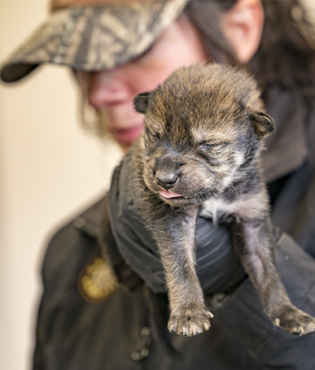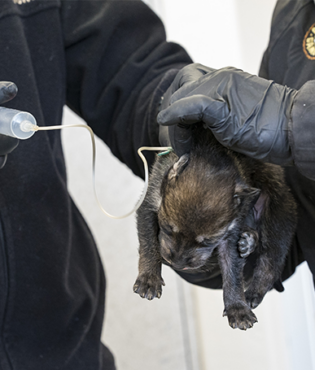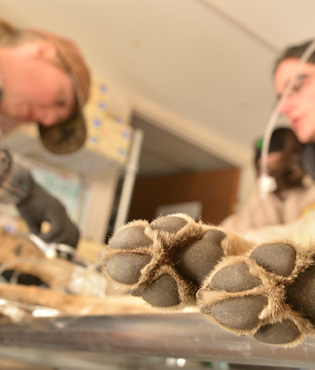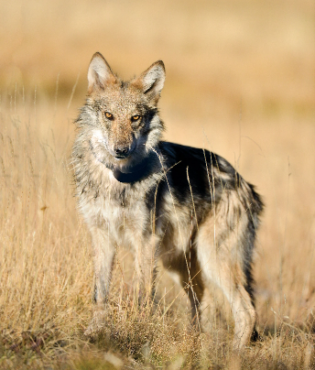Mexican WOlf Program
Returning the Mexican wolf to the wild.
Nothing quite represents the wild like the wolf and its iconic howl. For centuries in Arizona, the call belonged to the Mexican wolf. But as the area attracted more settlers, the Mexican wolf was seen as the enemy of progress and efforts to eliminate it from the state were successful.
In the 1970s, the first discussions around bringing back the Mexican wolf began. Over the decades, the Arizona Game and Fish Department, along with other state, federal, tribal and Mexican wildlife agencies, has been working hard to return this icon of Mexico and the American Southwest to its homeland. And in 1998, the first 11 wolves were reintroduced back into Arizona.
Today, the population of Mexican wolves in Arizona and New Mexico has surpassed 200, slowly but surely reclaiming their place in the wild
THE SCIENCE OF WOLF CONSERVATION
What does it take to revive the population of a species that’s been gone for decades? AZGFD has worked closely with other agencies on a recovery plan based on the best science available and inspired by other successful recovery efforts.
The few remaining wolves in Arizona and Mexico were captured for a captive breeding program carefully designed to bring their numbers up while ensuring necessary genetic diversity.
In recent years, AZGFD and its partners have been using an effective process called cross-fostering where hand-selected and genetically valuable captive-born pups are placed into wild dens of the same age. This technique has proven so successful that it is improving several measurements of genetic diversity in the wild Mexican wolf population.
SUCCESS 25 YEARS IN THE MAKING
For the first time since reintroduction into the wild, a minimum of 241 wild Mexican wolves were documented in 2022.
“This milestone has been 25 years in the making,” said Brady McGee, U.S. Fish and Wildlife Service Mexican Wolf Recovery Coordinator. “To go from zero wild Mexican wolves at the start to 241 today is truly remarkable. In 2022, we recorded more packs, more breeding pairs, and a growing occupied range, proving we are on the path to recovery. These achievements are a testament to partner-driven conservation in the west.”
The 2022 population estimate represents a 23% increase from the minimum of 196 wolves in 2021. This marks the seventh consecutive year of population growth and a more than doubling in size since 2017. The population is distributed with 136 wolves in New Mexico and 105 in Arizona.
Mexican wolf population information is gathered from November through February by the Interagency Field Team. During this time, the Interagency Field Team conducts ground and aerial surveys using a variety of methods, including remote cameras, scat collection and visual observation. Counting the population at the end of each year allows for comparable year-to-year trends at a time of year when the Mexican wolf population is most stable.
For more information on the Mexican Wolf Recovery Program, visit the Mexican wolf website (www.fws.gov/mexican-wolf) or visit the Arizona Game and Fish Department (www.azgfd.gov/wolf).
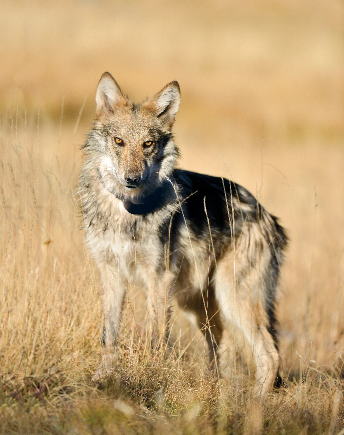
YOU CAN BACK THE PACK
While reintroduction efforts have been successful thus far, our job is far from over. AZGFD
continually monitors the wolf population to track data such as pack size, location and health.
If you would like to donate to Mexican Wolf Conservation, you can mail a check to:
Arizona Game & Fish Dept. Attn: Mexican Wolf Conservation
5000 W Carefree Hwy, Phoenix, AZ 85086
